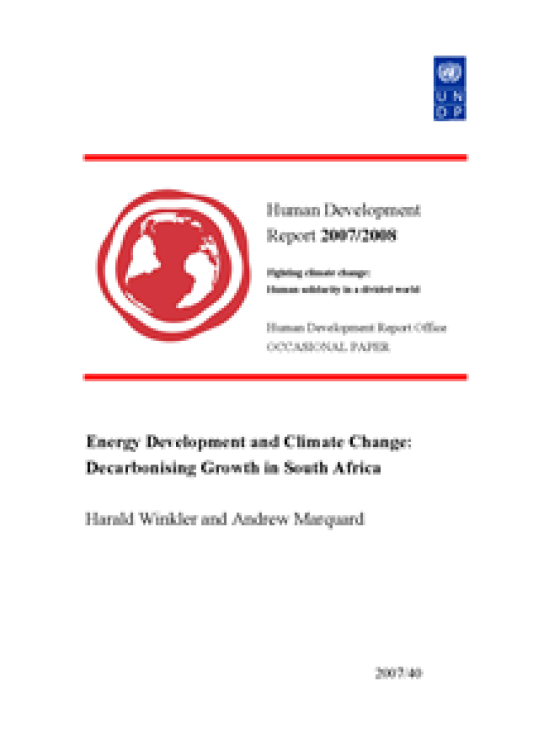Energy Development and Climate Change
Decarbonising Growth in South Africa

Download Report by Language
Document
winklerharaldandmarquardandrew.pdf
(270.39 KB)
Citation
Winkler, Harald, Marquard, Andrew. 2008. Energy Development and Climate Change: Decarbonising Growth in South Africa. New York.
Energy Development and Climate Change
Decarbonising Growth in South Africa
Posted on: January 01, 2008
Climate change mitigation poses significant challenges for South Africa and its energy development. Not only does South Africa have an extremely energy-intensive economy based primarily on coal leading to relatively high emissions, but it simultaneously faces a host of daunting development challenges, exacerbated by the legacy of apartheid. Challenges for development include a dramatic gap between rich and poor, a heritage of racial oppression and inequality, a lack of infrastructure, high levels of unemployment and urbanisation, an economy adjusting to globalisation, and the new challenge of AIDS. Given the challenges of development to meet basic needs, mitigation policies and measures have to be integrated with development goals. While South Africa’s traditional development path, based on energy- and capitalintensive mega-projects is unfavourable for mitigation strategies, it may be possible to incorporate sustainable development goals with mitigation. This paper presents a case study of human development and climate change in South Africa. It starts by outlining the key development challenges that the country faces and the history of recent responses in development policy. Section 2 hones in on the energy sector, providing a brief profile of the sector contributing most to greenhouse gas (GHG) emissions. The implications of South Africa’s ‘minerals-energy complex for its GHG emissions profile are examined in section 3. Section 4 discusses the context and development of South African climate change policy, and examines implementation progress to date. The final section of the paper begins with a summary analysis of key mitigation options in energy efficiency, changes in the fuel mix and structural changes. Section 5 then examines the key constraints facing the implementation of such options, before concluding with possibilities for international cooperation to contribute to sustainable development and mitigation in South Africa.

